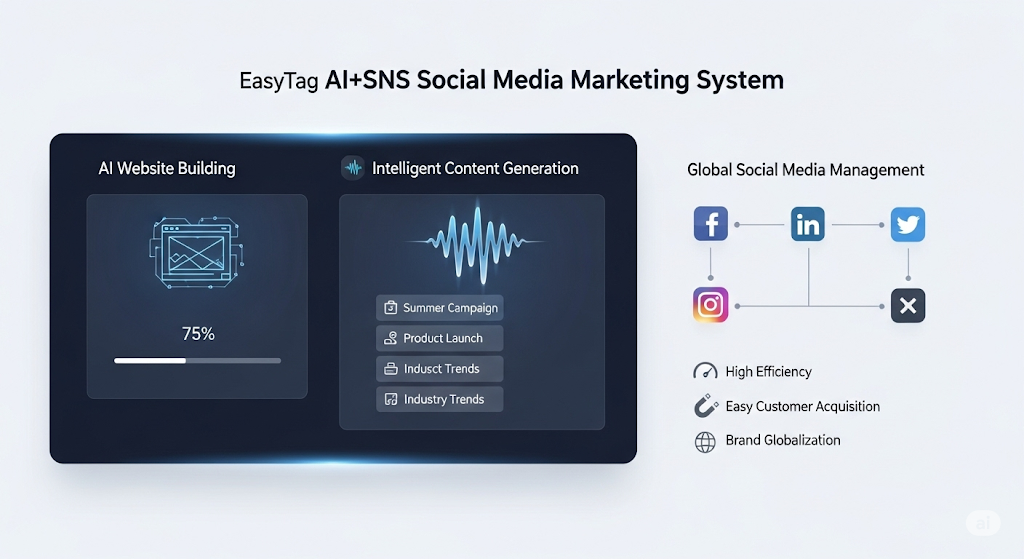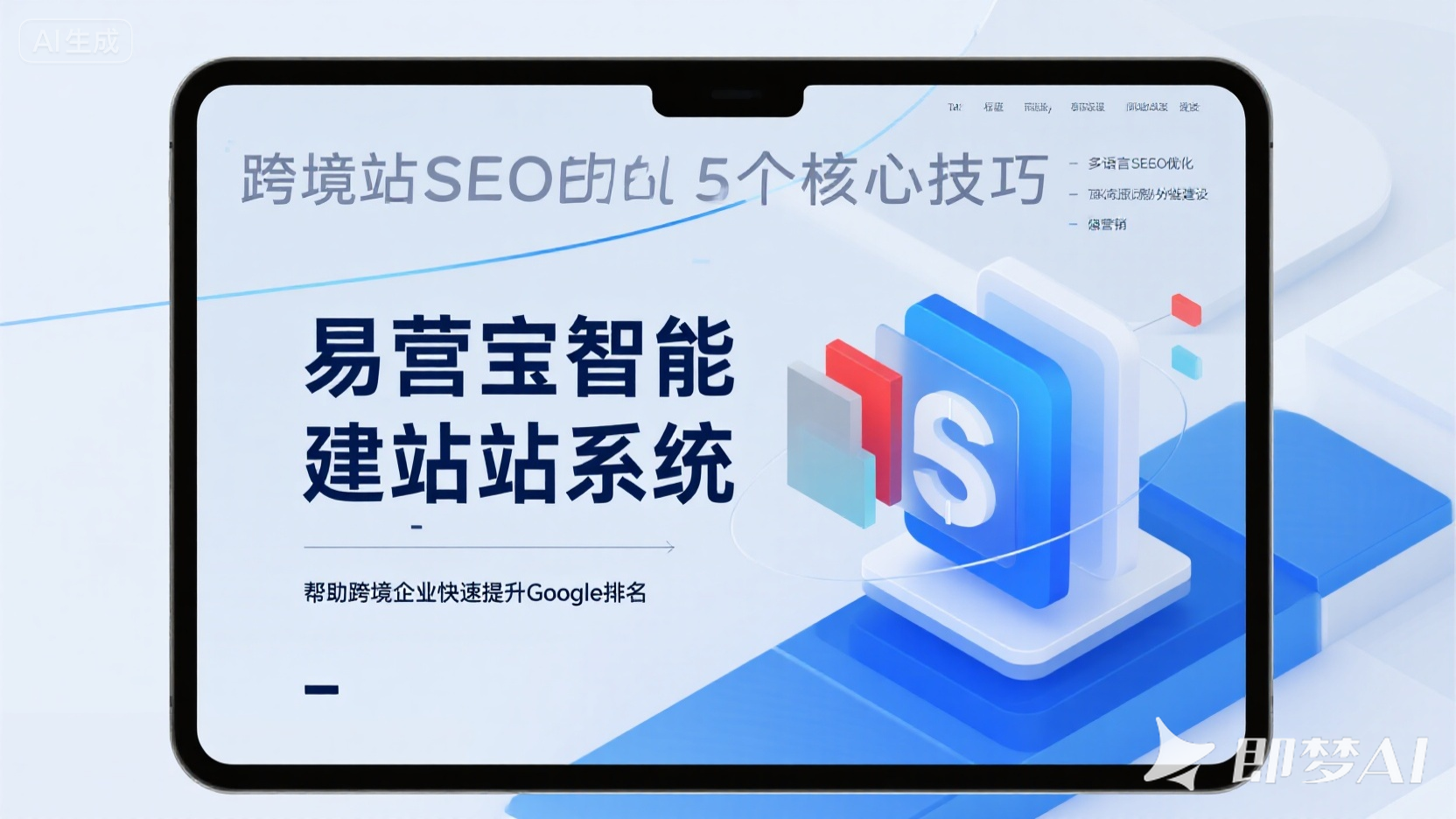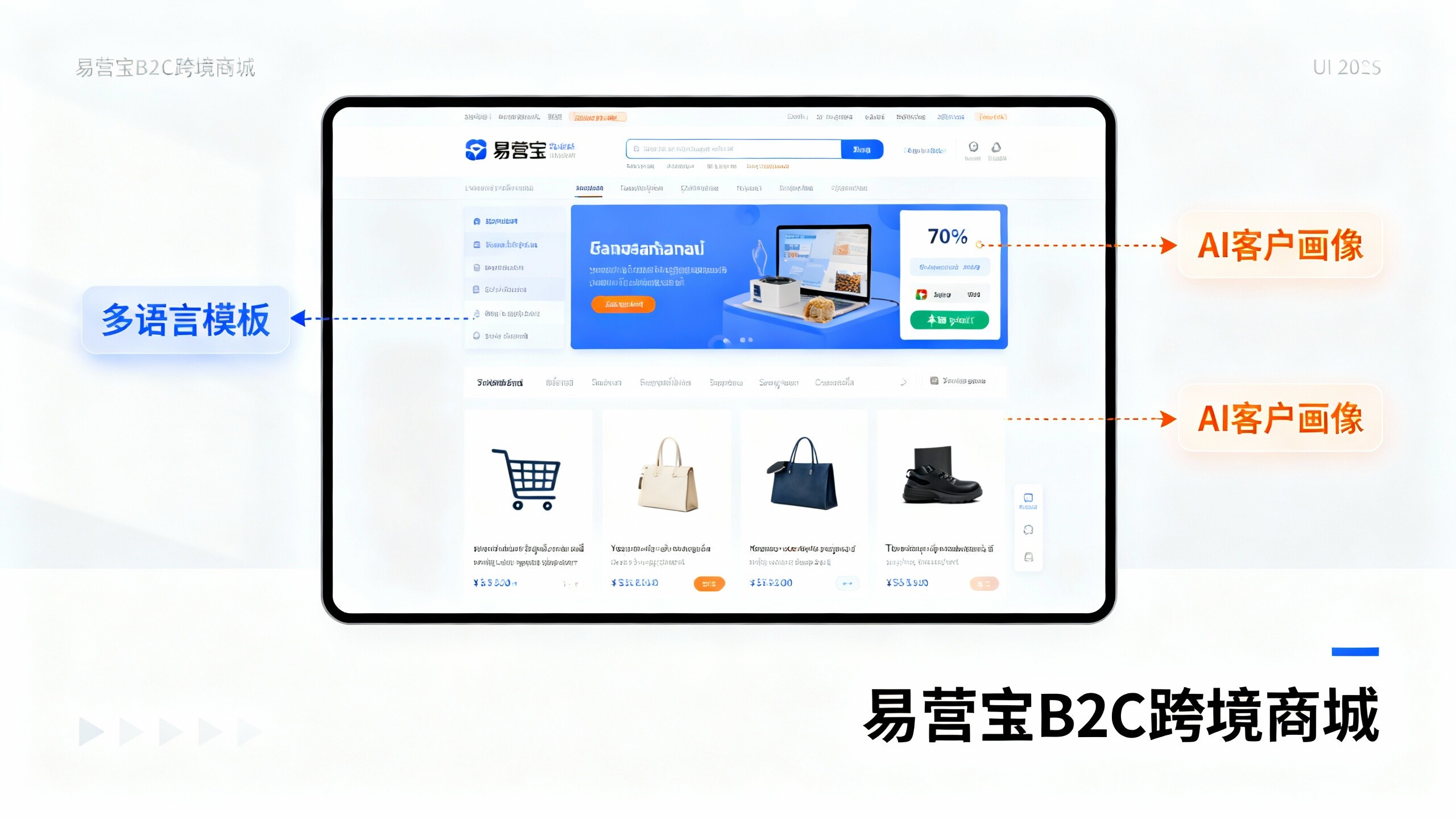Easy Operation Cloud Intelligent Website Marketing System Platform!
- What are the geo-targeted website solutions? 3 successful market entry case studies2025-11-19View details
- Why do 90% of cross-border marketing teams choose AI multilingual website systems? Real data reveals the secret2025-11-18View details
- Eyingbao City Partner Program: Zero technical background can earn over $10K/month? Real case study breakdown2025-11-18View details
- Using Eyingbao for brand promotion, how to achieve a 300% increase in organic traffic in 3 months?2025-11-19View details
- Which global website SaaS platform is the strongest? 5 dimensions of actual testing show Eyingbao leading in what aspects2025-11-19View details
- Middle East Website System Comparison: Self-built vs Yisoubao - Which is Faster?2025-11-18View details
- AI驱动网站建设服务,让小白也能7天上新站2025-11-19View details
- AI diagnosis for foreign trade independent station ads, uncovering 80% wasteful ad spend2025-11-19View details
Responsive Website Platform Selection: 4 Practical KPIs for Mobile Conversion Optimization
The choice of responsive website platform directly impacts mobile conversion rates. For foreign trade independent site SaaS and cross-border website builders, this article provides four actionable and quantifiable performance indicators.
In a mobile-first traffic ecosystem, common pain points faced by researchers and operators include slow page loading speeds on mobile devices, interactions not optimized for mobile behavior, difficulties in maintaining multilingual content, and complex data attribution. For decision-makers choosing between foreign trade independent site SaaS or enterprise-level multilingual CMS, simply evaluating templates and styles is no longer sufficient—platform selection must be driven by quantifiable KPIs. Below, we elaborate on four core operational metrics for responsive website platforms, addressing the needs of multilingual foreign trade websites, cross-border e-commerce sites, and global SEO website systems, helping you ground your choice between "responsive website platforms" and "SaaS website systems."

1. First Screen Loading & Mobile Interaction Time (Quantifiable Target: LCP ≤ 2.5s)
First screen loading time is the first hurdle for mobile conversion. For foreign trade independent sites, platforms must offer intelligent lazy loading for images, scripts, and third-party resources, along with CDN distribution strategies. The recommended benchmark is LCP (Largest Contentful Paint), with a target of ≤2.5 seconds on mobile and a Time to First Byte (TTFB) under 600ms. In practice, SaaS website systems should support automatic image compression, WebP output, critical CSS inlining, and on-demand JS module loading, while monitoring Cumulative Layout Shift (CLS) and Interaction to Next Paint (INP) to ensure pages are both fast and stable on mobile. Technically, prioritize platforms with global CDN nodes and auto-SSL certificates to reduce regional latency. For cross-border website projects, the distribution of nodes in target countries directly impacts conversion rates—request third-party speed test reports and real case data during platform selection.
2. Mobile Conversion Paths & Interaction Rates (Quantifiable Target: Mobile Form Completion Rate Increase ≥20%)

With mobile users' short attention spans and operational constraints, responsive platforms must achieve conversions via the shortest paths. Key evaluation dimensions include customizable mobile CTAs, single-column priority layouts, optimized input fields and payment flows, and one-click Tel/WhatsApp/email triggers. Track mobile form completion rates, CTA click-through rates (by page position), and cart-to-checkout drop-off rates. Platforms should support A/B testing, dynamic CTAs, and form simplification strategies, with segmented data exports by traffic source, country, and device for granular optimization. For cross-border e-commerce sites, integrating localized payment methods and auto-fill address fields significantly reduces abandonment; enterprise multilingual CMS must also support multi-scenario forms and regionalized solutions to localize conversion paths without inflating maintenance costs.
3. Multilingual Content Quality & Search Visibility (Quantifiable Target: Multilingual Page SEO Score Increase ≥25%)
Multilingual foreign trade websites require not just translation but semantic optimization and structured content management. Evaluation criteria include: independent URL structures (e.g., /en, /es, /ru), AI translation engines with manual proofing options, and SaaS systems supporting batch TDK management. Proper directory structures and hreflang tags directly impact global SEO systems' indexing efficiency. During selection, demand platforms that output standardized sitemaps, auto-generated multilingual metadata, and schema markup, with content quality scoring and recommendations. Set measurable targets—e.g., a ≥25% post-launch SEO score increase for multilingual pages. Content-ads closed loops are critical: platforms with AI keyword expansion, auto-TDK generation, and social sharing features drastically reduce operational costs while boosting long-term traffic quality.
4. Data Tracking & Continuous Optimization Capabilities (Quantifiable Target: Mobile Conversion Rate MoM Increase ≥10%)

The final metric focuses on data closed loops: platforms must natively support event tracking, cross-domain attribution, and multi-platform ad integration. Quantifiable requirements include precise mobile event logging (CTA clicks, form submissions, upsells, payments) with real-time CRM/ad platform feedback. Superior platforms offer daily dashboards and 24/7 monitoring with deep segmentation by country, device, and channel. For paid traffic projects, integrate ad optimization tools for ROI tracking—identify channel-specific CAC and ROAS to optimize spend. For example, some services achieve 40%+ CTR lifts, 37% lower CAC, and 1:8.3 ROAS, transforming technical upgrades into commercial returns. If needing external support, consider integrated marketing services for "build-acquire-convert" full-funnel solutions. For instance, in cross-border e-commerce or B2B scenarios, seamless platform-ad integration achieves higher conversion efficiency: Facebook广告推广.
Conclusion: Choose responsive platforms guided by quantifiable metrics—prioritize LCP, mobile conversion paths, multilingual SEO, and data optimization. For foreign trade SaaS and cross-border projects, evaluate "SaaS website systems" and enterprise multilingual CMS based on technical capabilities, regionalized solutions, and global SEO support. EasyYabao’s AI-driven smart websites and full-funnel marketing capabilities provide practical technical and localization support, helping clients achieve rapid deployment and continuous optimization. Contact us for tailored platform assessments and implementation plans based on your target markets. Learn more about solutions or request demos by contacting our sales team.
- Website
- Website Platform
- SSL certificate
- Multilingual website construction
- Facebook Ads
- Campbell (name)
- SEO
- free-standing station
- Intelligent website building
- AI translation
- AI translation engine
- Foreign trade independent website
- Multi-language website
- Global SEO Website System
- Geo-targeted website solutions
- Enterprise Multilingual CMS
- Cross-border e-commerce website
- SaaS Website System
- Responsive website platform
- Cross-border website construction
- How to create an independent foreign trade website
- Multilingual Website Construction for Foreign Trade
- Foreign Trade Standalone Site SaaS
- Responsive Web Design
Related Articles
 Which SaaS for Foreign Trade Independent Websites is Stronger? 5-Dimension Comparison + Real Cost Calculation
Which SaaS for Foreign Trade Independent Websites is Stronger? 5-Dimension Comparison + Real Cost Calculation Cost and Timeline for Multilingual Foreign Trade Website Development: How Can Small and Medium Teams Implement in 3 Steps?
Cost and Timeline for Multilingual Foreign Trade Website Development: How Can Small and Medium Teams Implement in 3 Steps? How to Create an Independent Foreign Trade Website: A Beginner's Guide to Avoiding Pitfalls
How to Create an Independent Foreign Trade Website: A Beginner's Guide to Avoiding Pitfalls
Related Products

















